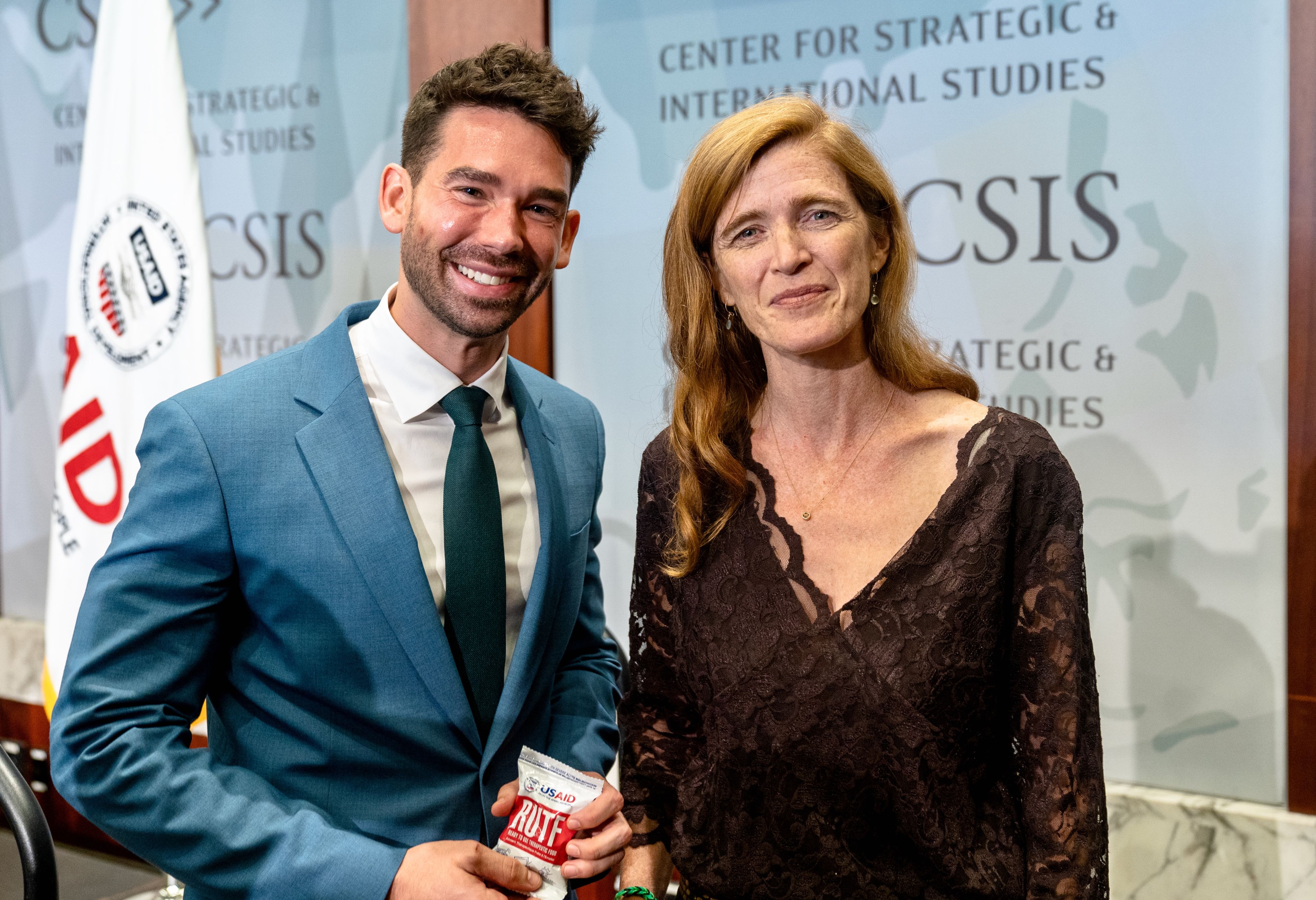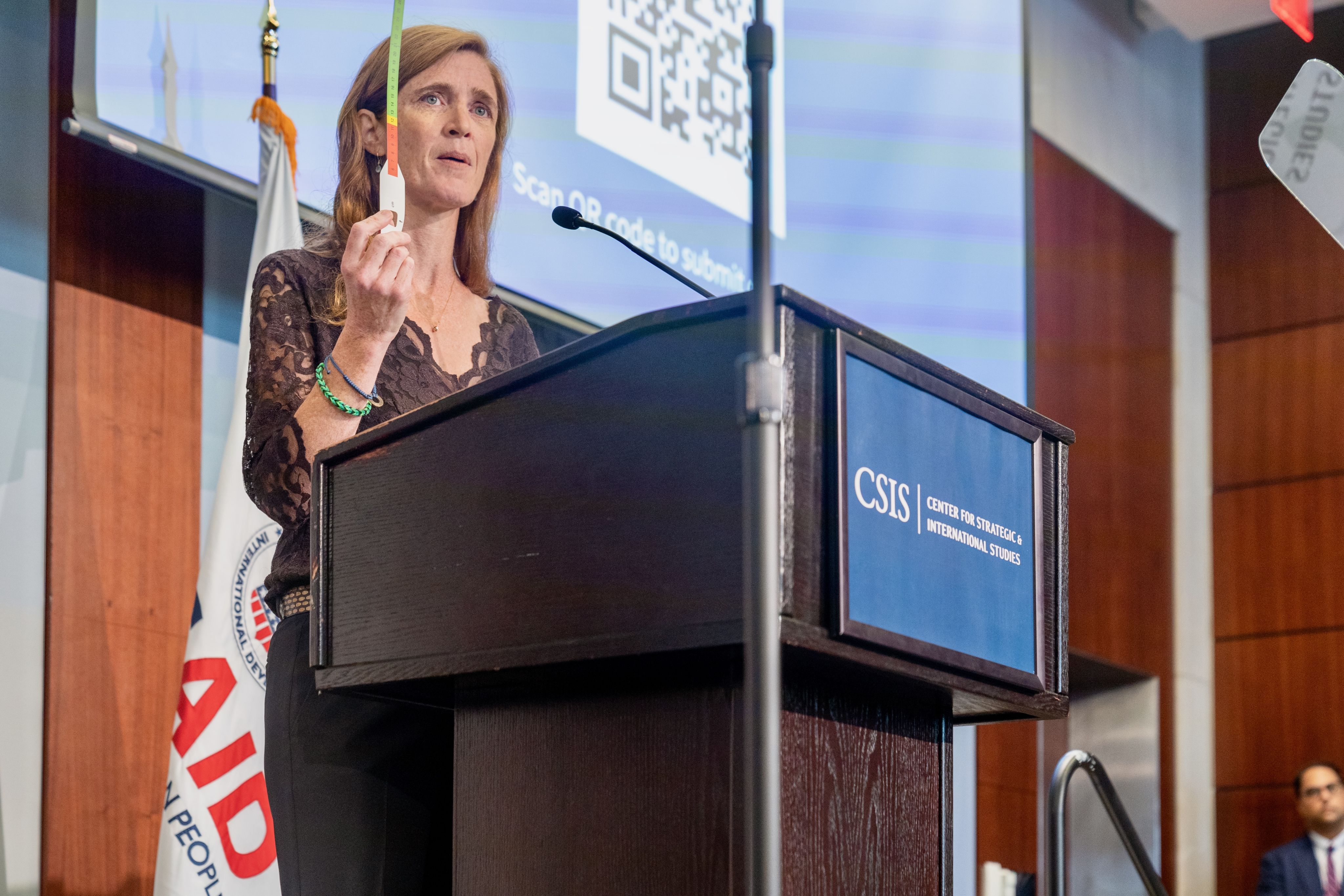The 'missing ingredient' in the fight against malnutrition
Ready-to-use therapeutic food, or RUTF, is a life-saving medicinal food used to treat severely malnourished children.
In the face of the current global food crisis, scaling up funding and production of this essential treatment is crucial.


The levels of food insecurity and malnutrition in the world are reaching catastrophic levels.
Today, a perfect storm of COVID-19, conflict, extreme drought, global supply chain disruptions, and historic inflation is driving rapid increases in famine-like conditions and deaths from malnutrition.
And children are bearing the worst of this crisis. Before the pandemic, almost 50 million children in the world suffered from wasting, the deadliest form of malnutrition, on any given day.
Now, those numbers are soaring significantly higher.

Since the beginning of the year, the global hunger crisis has forced one new child every 60 seconds to suffer from severe wasting.
Wasting accounts for 1 in 5 deaths among children under 5, making malnutrition one of the top killers of children worldwide.
Even in fairly stable countries, child wasting is on the rise. For example, in Uganda, child wasting has increased by 61% since 2016, and in Nepal, it has risen by 19% since 2019.
Malnutrition
Malnutrition is the umbrella term encompassing both overnutrition and undernutrition as a result of impaired nutrient utilization, deficiencies or excesses in nutrient intake, or imbalances of essential nutrients.
Wasting
Wasting is defined as low weight for height and is the most severe and life-threatening form of undernutrition.
Multiple factors are driving the surging malnutrition crisis.

Conflict and insecurity
Ukraine
Russia’s invasion of Ukraine is significantly constraining the global availability of grains, fertilizer, and fuel, as well as humanitarian resources to respond to food insecurity and malnutrition emergencies.
Afghanistan
Decades of conflict and insecurity have left over half of the population living below the poverty line. Some 1.1 million children are projected to need lifesaving treatment for severe wasting this year, nearly double the number in 2018.
Ethiopia
Levels of malnutrition and wasting are surging due to ongoing conflict in the north of the country, leaving over 9 million people in need of food assistance.
Yemen
Often dubbed the world’s worst humanitarian crisis, half a million children are facing deadly, severe malnutrition as a result of war and economic stagnation.
The COVID-19 pandemic’s disruption of health and food systems
Due to COVID-19, experts predict there can be as many as 13.6 million additional young children who are wasted, 3.6 million children who are stunted, and 3 million children who are born to women with a low body mass index, leading to as much as $44.3 billion in future productivity loss.
Climate shocks
The Horn of Africa is experiencing the most prolonged drought in recent history, threatening the lives of those dependent on livestock and agriculture, and leaving more than 1.7 million children in desperate need of treatment for life-threatening malnutrition across Somalia, Ethiopia, and Kenya.
While traditional food aid is essential to respond to the global food crisis, it won’t save children suffering from severe wasting.
“Children suffering from severe wasting are too weak and too sick to eat ordinary food. They cannot be saved with bags of wheat or soy. To survive, they need urgent therapeutic nutrition, what we call RUTF.”
— Catherine Russell, executive director, UNICEF, July 18, 2022

Ready-to-use therapeutic food, or RUTF, is a relatively simple, medicinal food made of peanuts, powdered milk, vegetable oil, sugar, multivitamins, and sometimes soy, that can bring wasted children back from the brink of death in a matter of weeks.
Since RUTF requires no preparation or refrigeration, wasted children can, in most cases, be treated from their homes. This allows more children to recover since care doesn’t depend as much on access or distance to facilities with medical staffing.

“In life, there are no silver bullets. But when it comes to stopping kids from dying from wasting, RUTF is as close as one comes. But we haven’t invested in it.”
– Will Moore, CEO at the Eleanor Crook Foundation,
July 18, 2022

As a result of inflationary pressures and production shortages, RUTF prices are estimated to increase by up to 16% before the end of 2022. Scaling up political will and funding has never been more critical.
In July 2022, the U.S. Agency for International Development made the single largest investment in wasting treatment in history: $200 million to UNICEF that will deliver lifesaving treatment to an additional 2.4 million children across the globe.
USAID was joined by Chris Hohn, philanthropist and chair of the Children’s Investment Fund Foundation, the Child Relief International Foundation, The Eleanor Crook Foundation, and The ELMA Relief Foundation, who collectively committed an additional $50 million in philanthropic resources to bring lifesaving care to severely malnourished children around the globe.
By scaling up the availability of RUTF by more than 50% to treat severe malnutrition, the United States is sending a strong signal to other donors to step up and demonstrate to the world's children that we will not leave them behind.

USAID Administrator Samantha Power also encouraged bilateral donors, corporations, and country governments to step forward with an additional $250 million in annual global investment for wasting treatment to begin reaching all severely wasted children across the globe.
Additional resources will support the delivery of treatment and its integration into health services.
Boosting multiyear humanitarian and development funding would enable the consistent provision of RUTF and help catalyze a plan to sustain historic increases in wasting treatment coverage — otherwise at risk of falling back to baseline levels by 2024.
“No child should die from malnutrition when we have the tools to stop it. It’s that simple. But reaching that goal will require others to step up. This is one of the best investments, one of the best bargains that we have in our toolkit, for dealing with hunger and for dealing with the need for more nutrition and for — ultimately, for development.”
— Samantha Power, Administrator, USAID, July 18, 2022

Together, USAID and the participating philanthropies call on all donors to follow their lead by delivering the increased and sustained investment in wasting treatment for as long as it takes to turn the tide on this longstanding public health emergency.

To learn more about how to get involved and make a pledge, visit endmalnutrition.org.

Text by Olivia Govik
Graphics by Emerald Bartolome
Produced by Naomi Mihara
Edited by Richard Jones & Naomi Mihara
SPONSORED BY

